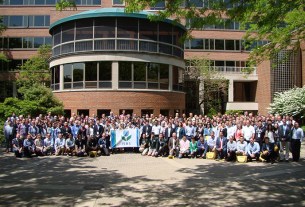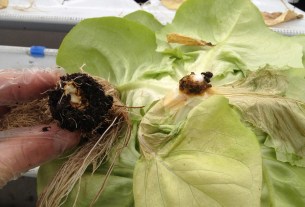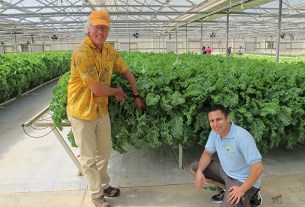In July 2023, I posted the article The 2023 Controlled Environment Agriculture Market – How Are We Evolving? After fielding several questions and comments from industry professionals who I really respect, I feel the need for one (maybe two) follow-up articles.
This article is first because I firmly believe labor is the biggest challenge we face today, as well as for the next 10 years in controlled environment agriculture (CEA), and in commercial horticulture and general production agriculture.
Victor Loaiza Mejia posted the following on LinkedIn on August 10, 2023:
“I disagree with your assessment of the lack of ‘grower or production leadership’. Traditionally the greenhouse industry has had a legacy program (like Ivy League College) that benefited growers that come from outside the NAFTA countries. The local younger generation of growers and operators need opportunities to grow into these positions. They need mentoring and support.
“My vision of protected agriculture is more regional (USA, Canada, Mexico) than only thinking about the USA. As you mentioned in the article, the growing surface has decreased in the US but has increased in Mexico for example. The oldest greenhouse companies operating in the US and Canada are now some of the largest tomato marketers in the USA, purchasing greenhouse produce in Mexico at a very large scale, without really having ‘skin in the game.’ I see this as a big entry barrier for new companies based in the USA.
“The opportunity for small greenhouse companies is to resist the push to buy the newest closed greenhouse and buy only the necessary technology and develop their local market. Creating Cooperatives style of relationships with other small growers might be beneficial.”
Well, Victor, yes. That’s really all I have to say. Yes, I agree. I should have and could have selected my words better, while also providing more details behind my statement. If I would have, you would have seen that we are saying almost the same thing.
Now that we officially agree, let’s break this conversation down into the realities that drive the factors you highlight.
Where did the head growers, production managers, and vice presidents of operations come from in the U.S. controlled environment agriculture industry?
The U.S. greenhouse vegetable industry started in the early to mid 1980s. (The Canadian greenhouse industry started a few years prior, and the Mexican greenhouse industry began about 10 years later.) Initially, the industry was almost 100% focused on growing tomatoes. Much of the industry was built off importing not only Dutch greenhouse technology, but also Dutch growers who were equipped with the training and knowledge needed to operate this new technology.
As years went on, the U.S. continued to attract growers from the Netherlands, as well as nearby areas such as the United Kingdom and Belgium, which also had well-established glasshouse industries. Many of these early immigrants were well experienced with some education. They were young males eager to make their mark on a new industry in a new world thought of as “the land of opportunity.”
Now these same individuals have been in our small industry for 30-40 years. They are getting close to retirement, but many still work. This is an important part of Victor’s criticism and if you compare it with the graph below, you see why they have aggressively held on to positions of power.
The industry does not have enough companies that can pay them the money they want or to promote others into key positions, while protecting their own careers and those of their friends. (Nothing new here. This occurs in all industries. Normally, industries have more companies and the impact is not so drastic.)
What about the other skilled labor needed to profitably operate a greenhouse vegetable facility?
Greenhouses require lots of skilled labor to operate successfully, especially when the operations are anywhere from 10-200 acres. You need IPM managers, labor managers, assistant growers, junior growers, packhouse managers, logistics managers and more. The list goes on and on.
So where did these people come from? In many or most cases, Mexico. In the 1990s, the largest vegetable greenhouses in the U.S. were in southwestern Texas and southeastern Arizona — a short drive from the U.S.-Mexico border. This attracted young, educated Mexican (again mainly) men to jobs that paid well, provided year-round employment (not always the case in agriculture) and opportunities to work in a highly technical field that showed promise for advancement.
Now fast forward 30 years. These guys are ready and prepared to take over, but there are not enough opportunities for everyone to be in charge. This also means that as new companies open, we have a lack of ongoing opportunities to attract talent and give individuals chances to grow and develop the skills needed to run smaller or more niche organizations.
A change in politics. A change in opportunities. H-2A.
Simultaneously, we have seen a shift in our ability to bring labor into the United States. U.S.-based agriculture businesses rely heavily on worker visa programs to bring in groups of individuals to work jobs not often desired by locally available workers. The H-2A program allows U.S. employers or U.S. agents who meet specific regulatory requirements to bring foreign nationals to the United States to fill temporary agricultural jobs. (The word “temporary” is key!) But, this program and our attitude toward migrant workers has shifted significantly over the past 30 years.
According to the USDA, “Hired farmworkers make up less than 1 percent of all U.S. wage and salary workers, but they play an essential role in U.S. agriculture. According to data from the 2017 Census of Agriculture, wages and salaries plus contract labor costs represented just 12 percent of production expenses for all farms, but 43 percent for greenhouse and nursery operations and 39 percent for fruit and tree nut operations.”
The tightening of our southern border means that we rely on the H-2A program more than ever. According to a July 2023 article in NPR, “The number of guest worker visas issued each year has more than quadrupled over the past decade. But the program is rife with labor rights violations, and farmers who have come to depend on it don’t love it, either.”
As I stated before, U.S.-based greenhouse producers are competing directly with Canadian greenhouse growers, as well as Mexican greenhouse producers, for consumers’ wallets in produce aisles across the United States. This means, as the American portion of the greenhouse-grown industry, we need to be conscious of all costs (of which labor is a significant portion). It is safe to say that we have learned and can confirm that locally available labor is not as efficient as the labor we get through worker visa programs.
Why is local labor not as efficient as our immigrant workforce?
I will not even attempt to answer this question. But, what I can report is that through interviews with major greenhouse tomato growing operations, it is estimated that you need 3-4 times the amount of local labor as you do immigrant, migrant or visa workers. (This number seems true regardless of pay and benefits, based on information we received from the recently announced bankrupt company AppHarvest.)
Conversations with on-site labor managers makes me believe that one main reason this perception exists is because this talent pool is seen as an unskilled labor force. Labor managers all agree that is far from the truth. The truth is, many of these individuals are skilled based on experience gained at other farms. These skills make them eager to be employed based on “production output,” as they recognize that their production compensation will far out pace any hourly rate that they might be paid.
According to USDA statistics from October 2022, the H2A program has expanded since 2005. But has it expanded enough to keep up with the demand? Especially the demand of the controlled environment agriculture sector?
Even if we could keep up with demand in the greenhouse (or vertical farm), these programs do not allow us to address the issue of finding talented operational managers with experience to run the facility based on the current glass ceilings that appear to be in place.
So questions around labor, management and leadership remain for the U.S.-based controlled environment agriculture industry. From finding the experienced staff needed to operate an efficient greenhouse to providing the most talented in that group the opportunity to advance and excel.
And Victor, my response to your comment remains “yes.” Now my question back to you is, how will you and your contemporaries lead our industry in change?
Urban Ag News would love to hear from you. Please let us know your thoughts and comments.




I love this article. Timely, pertinent, a little scary. I am the operations and training manager for an Urban Aquafarm & training center in New Orleans, La. Our goal is to train local folks (within 3 states) with the skills necessary to become technicians. We are open to any ideas or partnership opportunities. Thank you very much for taking the time to write this article. I will cite this often when discussing the “need” with local government groups.
Thanks so much for your comment, Paul. We would be happy to explore partnership opportunities with you. Please email us at info@urbanagnews.com.
Thanks!